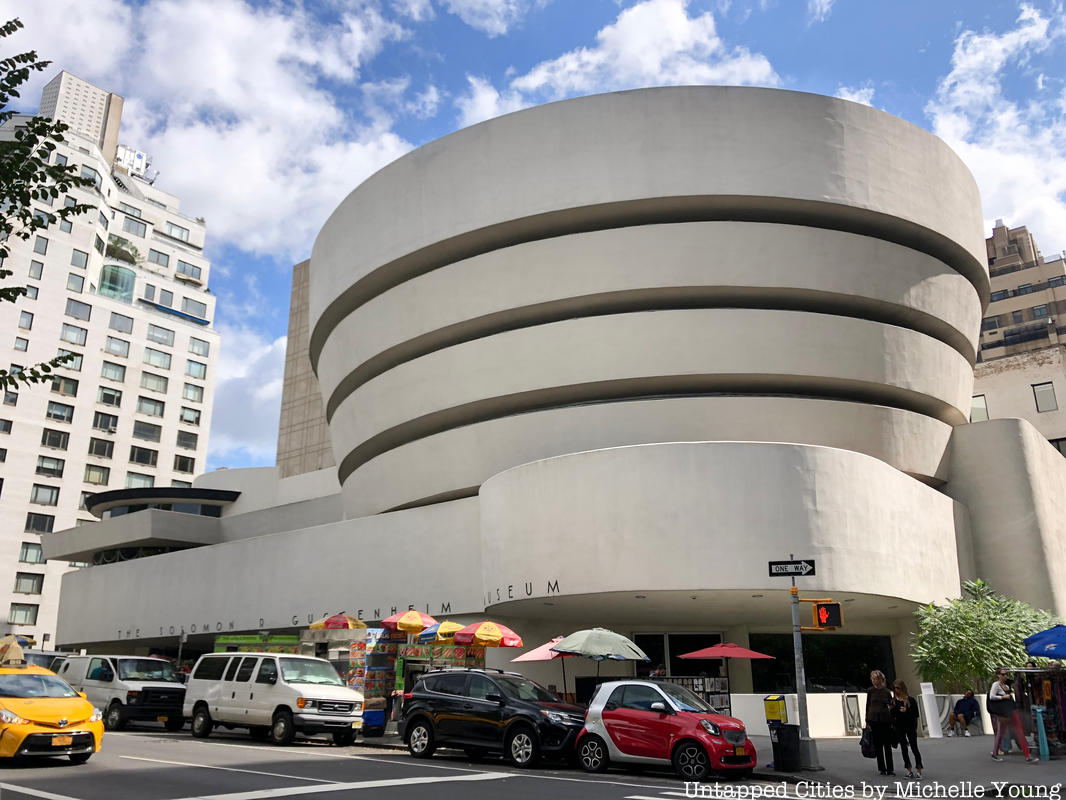2. Solomon R. Guggenheim Museum in the Upper East Side (Public)

Nestled on the Upper East Side, the Guggenheim Museum attracts a worldwide audience in the name of iconic 20th century architecture, modern and contemporary art, and exceptional education programming. But because of its location on the Upper East Side, the museum is also a local landmark, drawing in New Yorkers from just across the street, to throughout the city. It is often viewed as a place inspiring wonder and creativity in both its youthful and more seasoned patrons.
The iconic structure prompted a great deal of contention throughout its design and build process. Initially, Wright had envisioned a spiral made of red marble, stating that red is the color of creation. Rebay countered Wright’s vision, arguing that the color red does not embody what the museum should be, and the color was dropped from further designs. Aside from artistic differences, Wright also encountered difficulties with the New York City Department of Buildings over his renderings. The discrepancies resulted in a public display of contention, and even reached a point where Wright had to appear in front of BSA, in defense of his design.
Ultimately, Wright’s vision became a reality through the manifestation of an ivory spiral in 1959, six months after his passing. The building design was considered polarizing, while some reveled at the spiral tilted walkway, others found the iconic spiral to be overshadowing to pieces housed in the museum. Nonetheless, the unique ability to see multiple floors of the museum at a time from any particular viewpoint allow for a visitor to take in the museum exhibition as a piece of art itself.
Discover more about the architecture of the Guggenheim Museum here.





